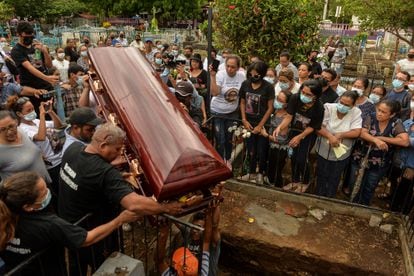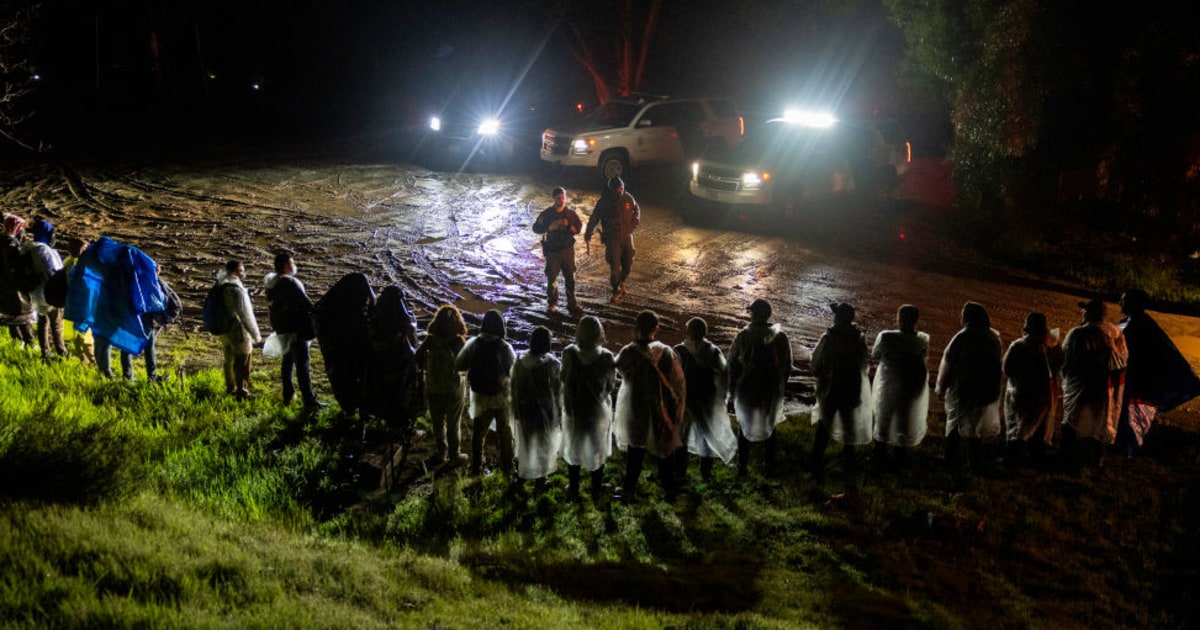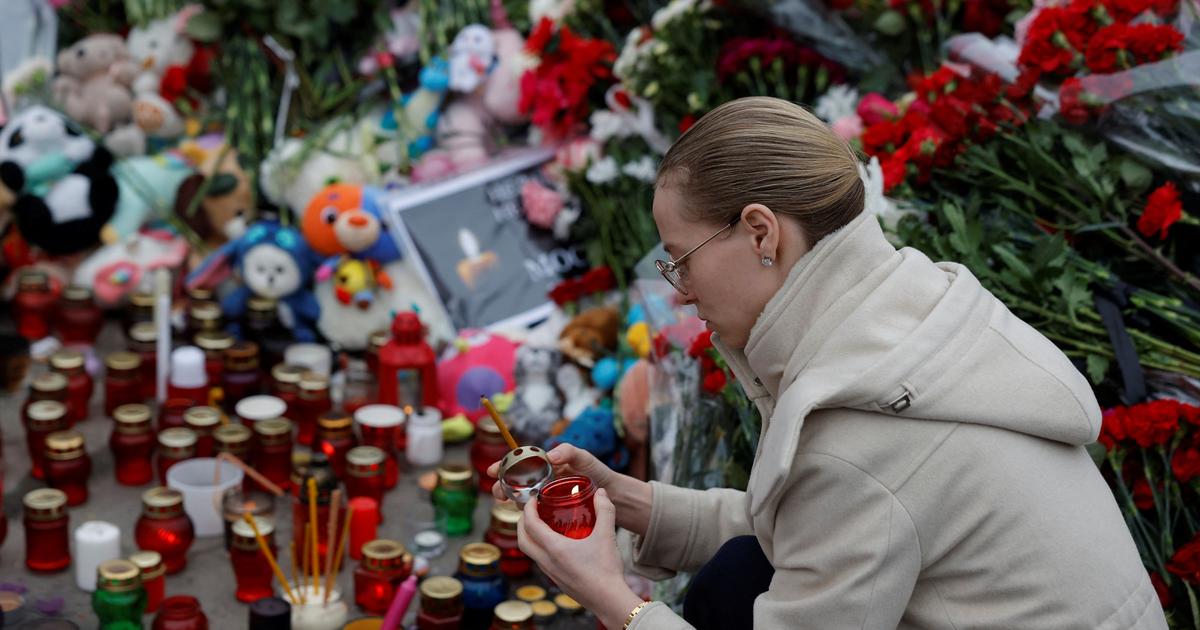Seeing his son with the water below his waist, firm, without staggering on the stones of the bed or the current, Pablo Cuevas ruled out using the 60-meter manila he had bought to cross the Rio Grande with his family, because it would prove more of a hindrance than a useful tool in his desperate attempt to reach the American shore.
—Papaaaaaaaaaaaaaaaaaaaaaaa
The river is calm - shouted the 22-year-old from about 30 meters away from the shore.
Faced with the imminent arrival of Mexican or American agents, the man let go of the rope, hugged his 5-year-old grandson very tightly, and entered the waters.
It was mid-morning on April 17, less than a month ago.
The Rio Grande —a “treacherous” flow, according to the migrants who have been able to cross to tell about it— was calm, fortunately for this family that fled Nicaragua because of their father's job: Pablo Cuevas is a renowned human rights defender in his country.
Accustomed to tense situations due to his clashes with groups and policemen from the dictatorship of Daniel Ortega and Rosario Murillo, Cuevas concealed his fear of jumping into the river so that his wife, daughter-in-law and his other grandson would not lose the courage they had thought about and rehearsed so much. during the forty days that the journey to Ciudad Acuña, in Coahuila, lasted, crossing Central America and Mexico, along the same road populated by robberies, kidnappings, extortion, fatigue, hunger and death that another 49,738 Nicaraguans have followed in the first quarter of 2022 alone , according to the United States Customs and Border Protection.
The largest number of exiles from this country who have sought to cross that border in recent history.
Migrants crossed the Rio Grande into the United States from Mexico on May 13. ADREES LATIF (REUTERS)
The first week of March, at his home in Managua, Cuevas had made the decision to join this unprecedented exodus that escapes the political violence and the precarious economic situation that Nicaragua has been going through since 2018, after the social protests that were brutally repressed. by police and paramilitaries.
A sociopolitical crisis that has worsened since June 2021, when the Ortega-Murillo family intensified the hunt for opponents that facilitated the re-election and perpetuation in power of the presidential couple.
“Before the government closed the CPDH (Permanent Human Rights Commission),” says Cuevas —referring to the last defense organization left in Nicaragua—“I received threats and intimidating messages.
Someone from the government told me that I had better leave... I have never been a desk defender, I have always been in the territories, but I could no longer practice freely and my wife had nervous breakdowns thinking that they could arrest me at any moment.
So we decided to leave, and the route through the Rio Grande seemed the best, after analyzing it with many users I had and who had already crossed into the United States," he tells EL PAÍS.
The Cuevas family's greatest fear was drowning in the river.
Between March and April 2022, the news of Nicaraguans killed in those waters shocked the country: 10 people registered only by the Association of Nicaraguans in Mexico, although there are other entities that put the number at 14, such as the NGO Comunidad Nicaragüense en Texas ( TNC, in English).
Cases like that of a four-year-old girl swept away by the current or the most recent drowning, on May 1, of Calixto Nelson Rojas, an announcer for Radio Darío, a station that was burned and attacked by the Sandinista regime.
The death of the communicator in Piedras Negras was recorded by a Fox News reporter: it happened in the sight of US and Mexican border agents, who did not help him because they were prohibited from doing so,
while Rojas babbled for help as he couldn't stay afloat and ended up swallowed by the current.
The reason for not saving him was that a Border Patrol agent allegedly drowned weeks ago while trying to rescue two migrants.
Relatives and friends of Nelson Rojas, who drowned in the Rio Grande, carry his coffin during his funeral.
STRINGER (AFP)
Cuevas, a man informed by his work as a human rights defender, knew of the danger of crossing the river.
“We began to do introspection exercises with the family, to remember one of our camping trips to the sea in Nicaragua, specifically once a mouth —a narrow passage of the sea— emptied and dragged us, but we were able to swim and save ourselves” , tells the lawyer now from Florida, where he has started an organization to help other Nicaraguan migrants.
"So he would tell the family to remember how to bury our feet firmly so we can cross the river."
The Cuevas were able to cross, without a rope and without a life jacket, confident in their previous experience.
However, some 3,000 kilometers south of the Rio Grande, in Nicaragua, dozens who have decided to leave the country and do not know how to swim or float take precautions before heading north: they sign up for Mario Orozco's swimming classes.
'I know it's a dangerous river'
With no major signs of resolving the sociopolitical crisis, Nicaragua has become a country on the run.
In 2021 alone, the United States Border Patrol recorded that 87,530 Nicaraguans tried to enter the southern border without documents.
The exponential increase occurred as of June, when the Ortega-Murillos imprisoned all their adversaries and closed the possibility of a resolution to the conflict through transparent elections.
If one asks in Nicaragua what is the best decision in this scenario, the majority, especially young people, answer the same: leave.
Migrant crossings leave at dawn from some gas stations in Managua, while others who feel politically persecuted, such as Pablo Cuevas, do so clandestinely across the Honduran border.
Border Patrol figures from January to March of this year measure this booming exodus: 70,066 Nicaraguans have surrendered to their agents.
"But there is an underreporting," says the Association of Nicaraguans in Mexico.
The migratory dynamics from this country, driven by political violence that has aggravated endemic evils (precarious economy and lack of employment), has changed.
In 2018, at least 120,000 Nicaraguans applied for refuge in Costa Rica.
The pandemic plunged Ticos into an unemployment crisis and Nicaraguans reconfigured their flight path.
First, because Costa Rica has collapsed and second, because Joe Biden's immigration promises were interpreted as greater flexibility.
Eddy Hurtado learns to swim at a recreation center in Esteli, Nicaragua. MAYNOR VALENZUELA (REUTERS)
Suddenly, the caravans in which Hondurans and Salvadorans used to predominate began to be led by Nicaraguans, who are now also prey to the mafias on the route.
Among those preparing to flee the country, crossing the Rio Grande became the best option, knowing the dangers of its waters.
That is why the post on Facebook by professional swimmer Mario Orozco offering free classes went viral in Nicaragua.
Orozco assures that some of his friends drowned in the Rio Grande and that moved him.
“I am a professional swimmer, I know the techniques to swim in open water.
So I took one of my days off to teach and avoid these tragedies,” he says, emphasizing that his work is humanitarian and not political.
The swimmer is concise and he prefers not to delve into details.
He does not say why but, for those who live in Nicaragua, he goes without saying: anything that the Sandinista government assumes as criticism can cost jail.
The pool where Orozco teaches is usually packed.
A reflection of the urgency to leave Nicaragua.
“I know it is a dangerous river,” Roberto García, a Nicaraguan who left the country a few weeks ago and is in Tapachula, tells EL PAÍS, “preparing himself mentally” to circumvent the Rio Grande.
“There are those who take swimming lessons;
I, for example, am watching YouTube videos, asking other friends who have already crossed where it is less deep;
the less violent current… I am afraid, but the situation is more critical when I am going to cross with my son,” confesses García, an automotive refrigeration technician who provided services to the Supreme Court of Justice.
García was imprisoned for seven months for participating in the 2018 protests in Nicaragua.
Upon release from prison, his workshop was never able to recover due to police harassment and lack of customers.
Tired, he decided to migrate.
“I don't even want to think about the day I'm going to cross the river with my wife and son.
It unsettles me.
My son is 10 years old and I only think of him, especially when I see so many brothers drowning on the news… like that announcer from León.
It was a horrible video.
One feels powerless.
I don't want a similar video of us,” he says.
Nor does he want to leave one last message like that of the radio host Calixto Rojas before jumping into the waters of the Rio Grande: “Today I leave for Piedras Negras at one in the afternoon.
Tomorrow at eight I am trying to cross the river.”
Subscribe here
to the EL PAÍS América newsletter and receive all the key information on current affairs in the region.


/cloudfront-eu-central-1.images.arcpublishing.com/prisa/PA3IU3N55QI4754TLKKIPUW5TI.jpg)
/cloudfront-eu-central-1.images.arcpublishing.com/prisa/HLK7GOESWRBMZA2KE2VATJISN4.jpg)








/cloudfront-eu-central-1.images.arcpublishing.com/prisa/KMEYMJKESBAZBE4MRBAM4TGHIQ.jpg)


